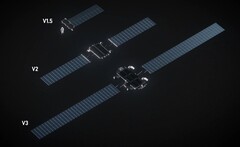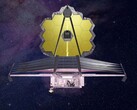As AI continues to push global demand for computing infrastructure, some of the tech industry's biggest names are looking beyond Earth for solutions. The idea of space-based data centers — once a speculative concept — is now gaining serious momentum. Following recent public interest from Amazon’s Jeff Bezos and former Google CEO Eric Schmidt, Elon Musk has now confirmed that SpaceX is exploring orbital data centers — using the company’s next-generation Starlink V3 satellites as the foundation.
On social media, Musk indicated that SpaceX will pursue space-based data centers, suggesting that scaling up the company’s forthcoming Starlink V3 satellites — each equipped with high-speed laser links — could make the concept viable. “SpaceX will be doing this,” Musk wrote, signaling an intention to transform Starlink’s global internet network into an infrastructure backbone for orbital cloud computing.
The potential appeal is clear: solar energy in space is abundant and free, and it eliminates the land use and environmental concerns tied to Earth-based data centers. Critics, however, argue that the costs and technical hurdles of building and powering such massive orbital platforms remain daunting.
SpaceX's Starlink V3 satellites represent a significant leap in capacity. While the current Starlink V2 minis max out around 100 Gbps, V3 satellites are expected to deliver up to 1 Tbps per unit. By comparison, Boeing’s Viasat-3 — another 1 Tbps-class satellite — took nearly a decade and hundreds of millions to develop. SpaceX aims to launch 60 high-capacity Starlink V3 satellites per Starship flight as soon as 2026.
Analysts like Caleb Henry from Quilty Space suggest that the scale and efficiency of Starlink V3 launches could put SpaceX far ahead in this emerging segment. “Nothing else in the rest of the satellite industry comes close to that amount of capacity,” Henry said.
Still, SpaceX has a history of turning skepticism into success. Starlink itself — once viewed as overly ambitious — now delivers broadband to millions globally. If Musk applies the same engineering scale and economics to compute infrastructure, the space-based data center might shift from futuristic dream to operational reality.
Source(s)
X post (linked above) via Ars Technica






















